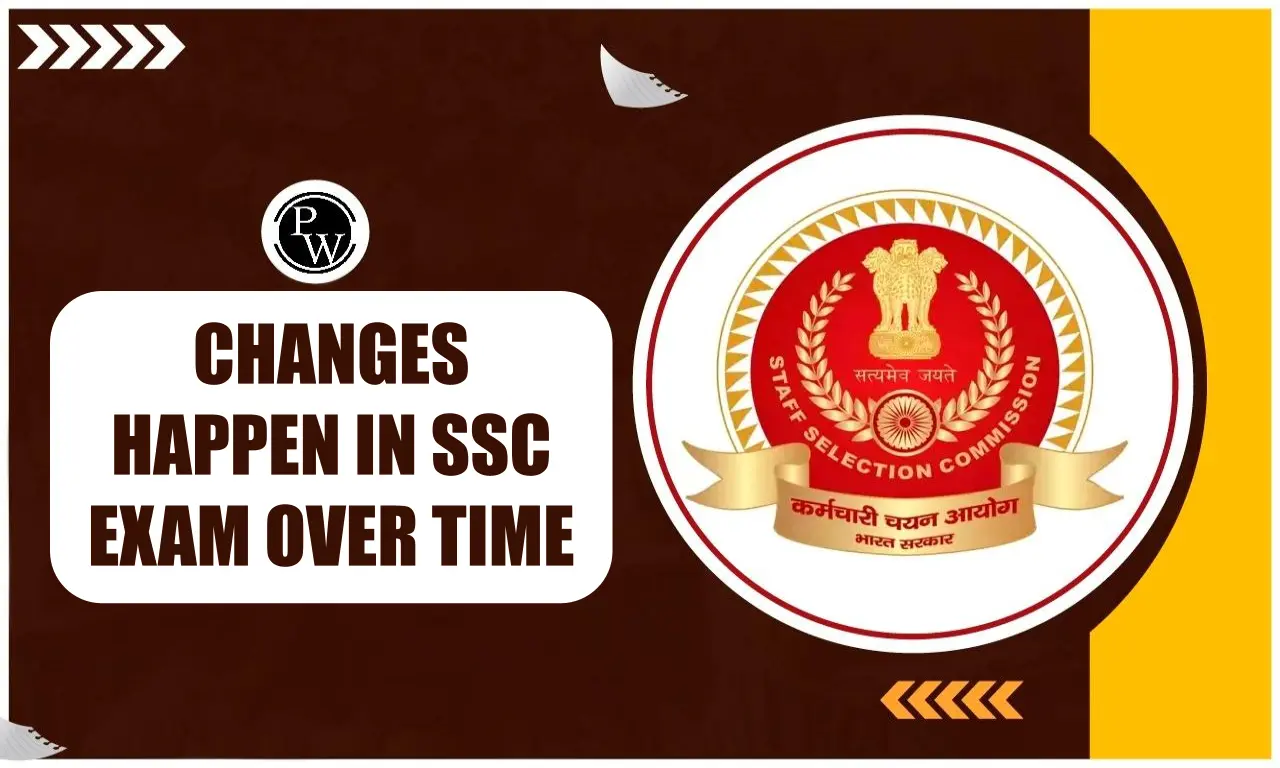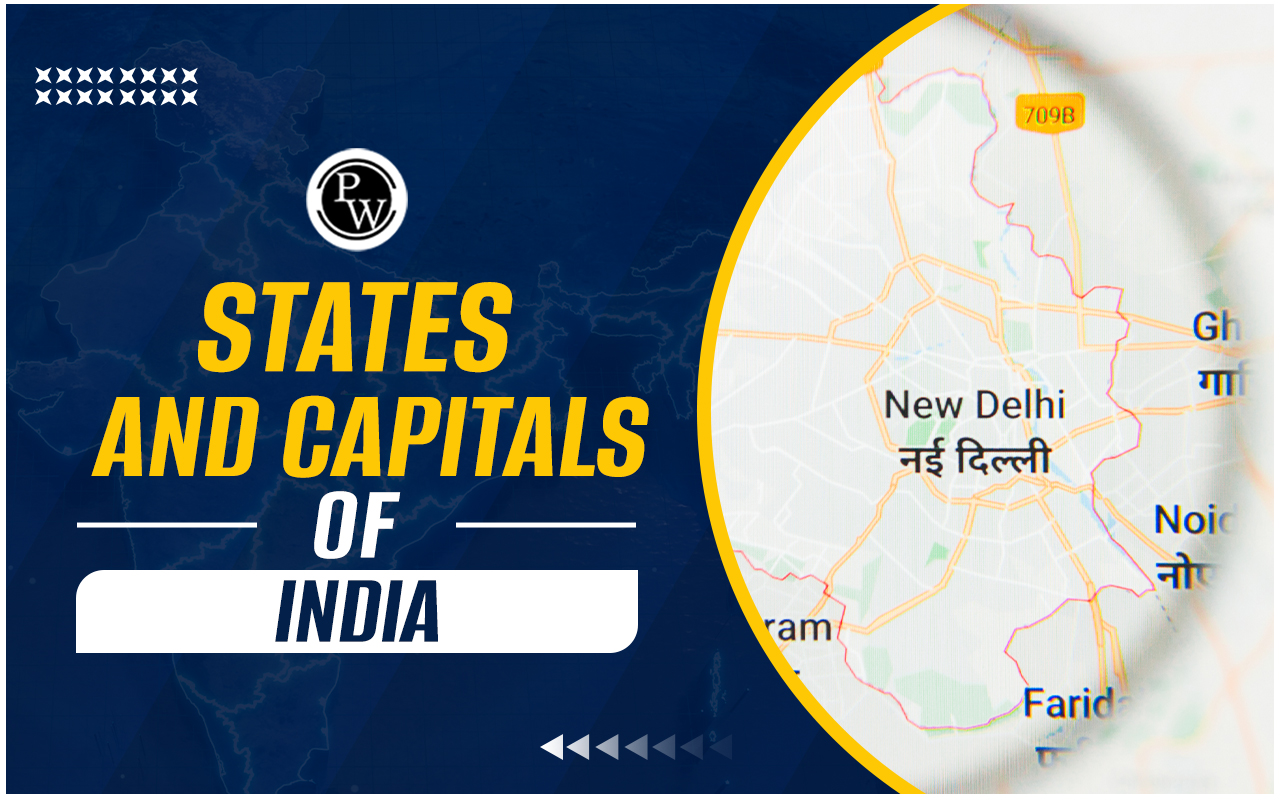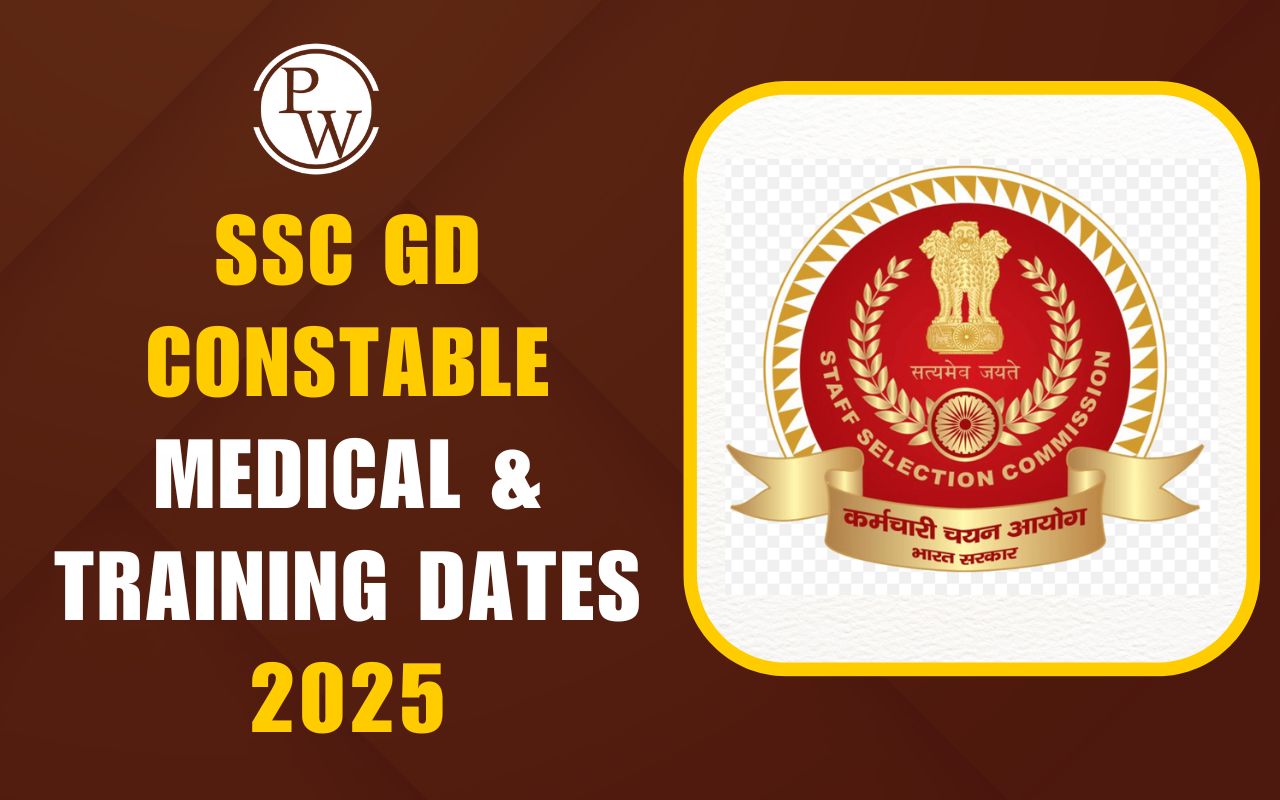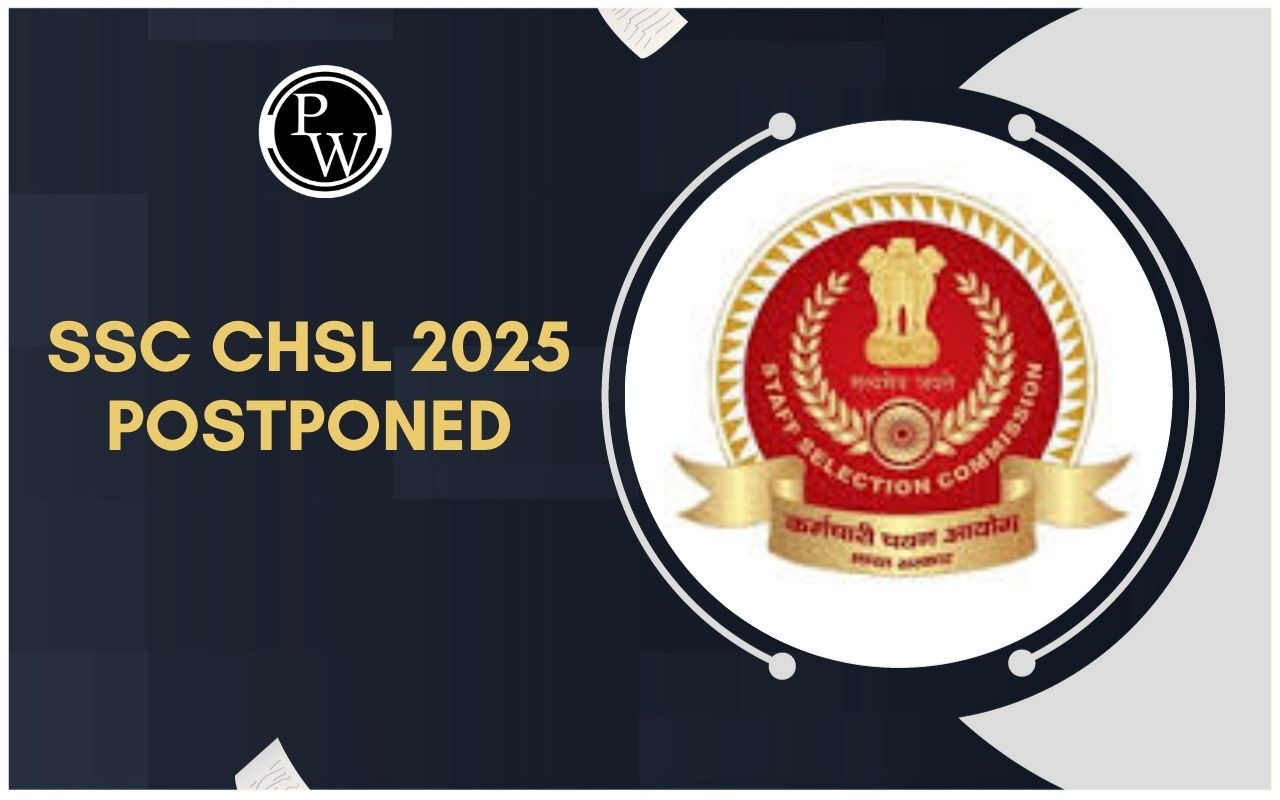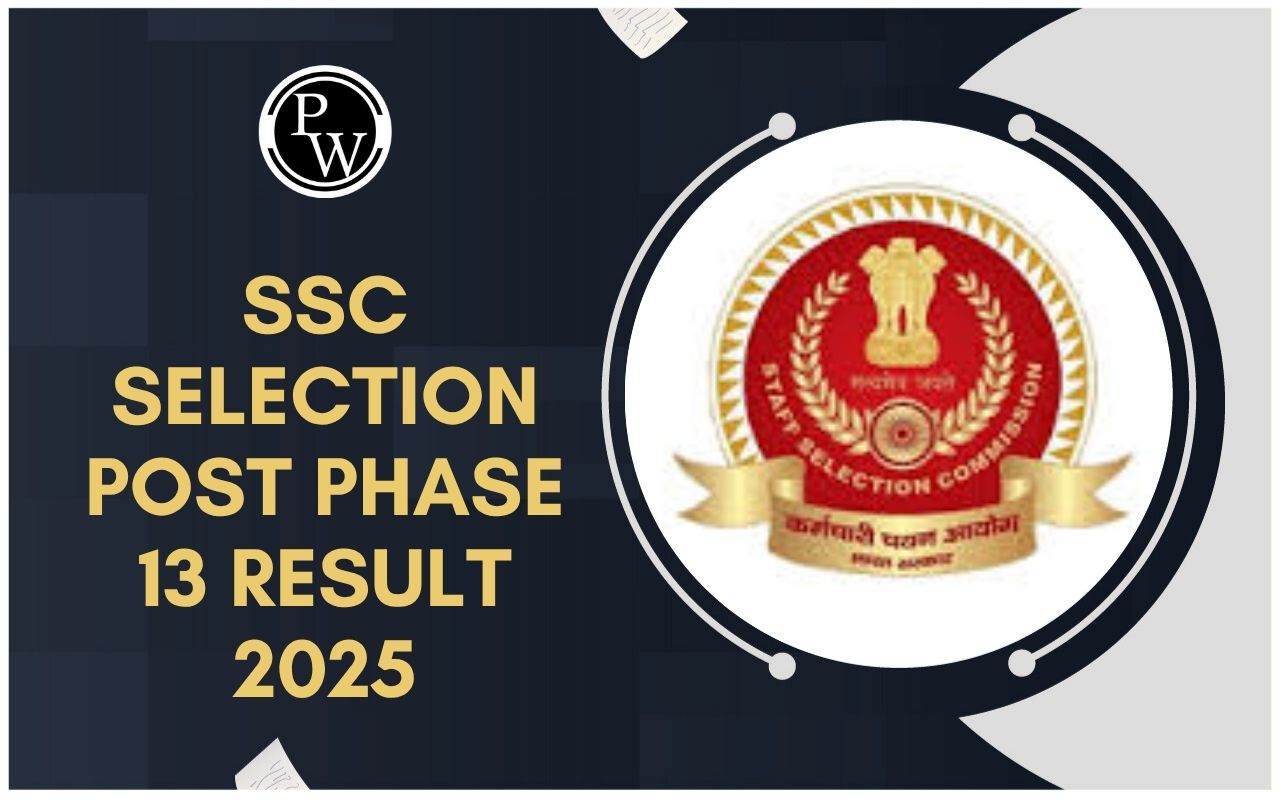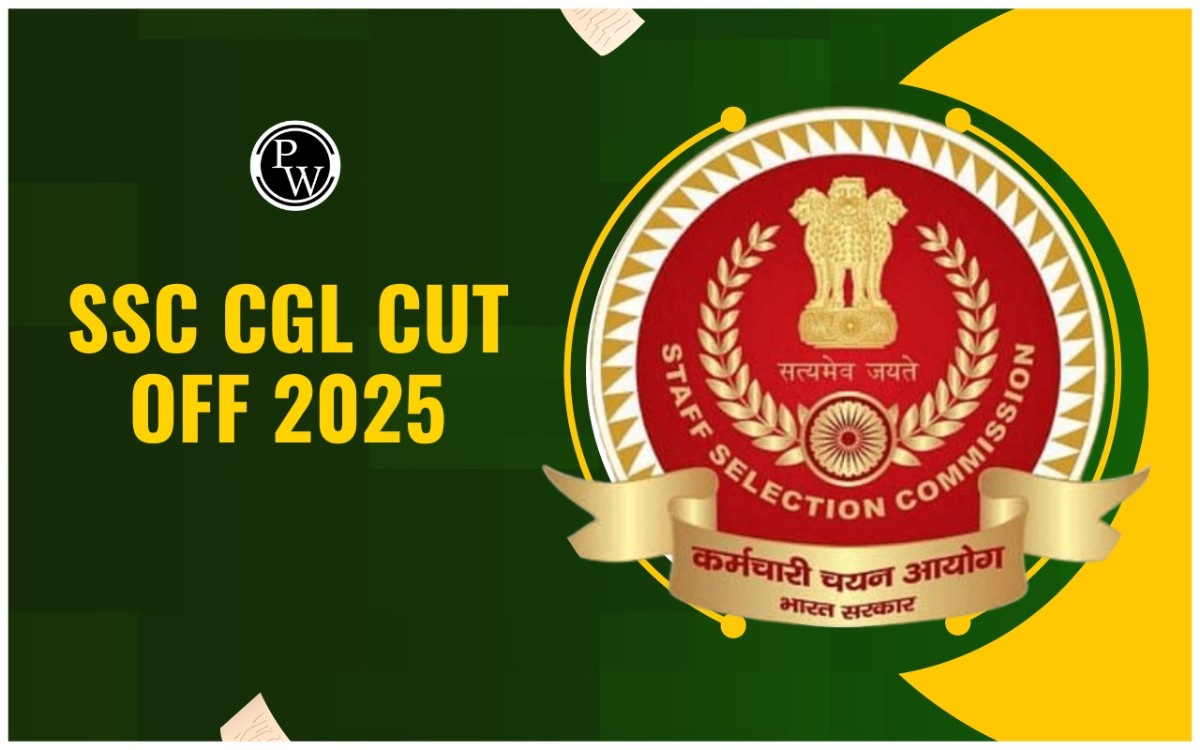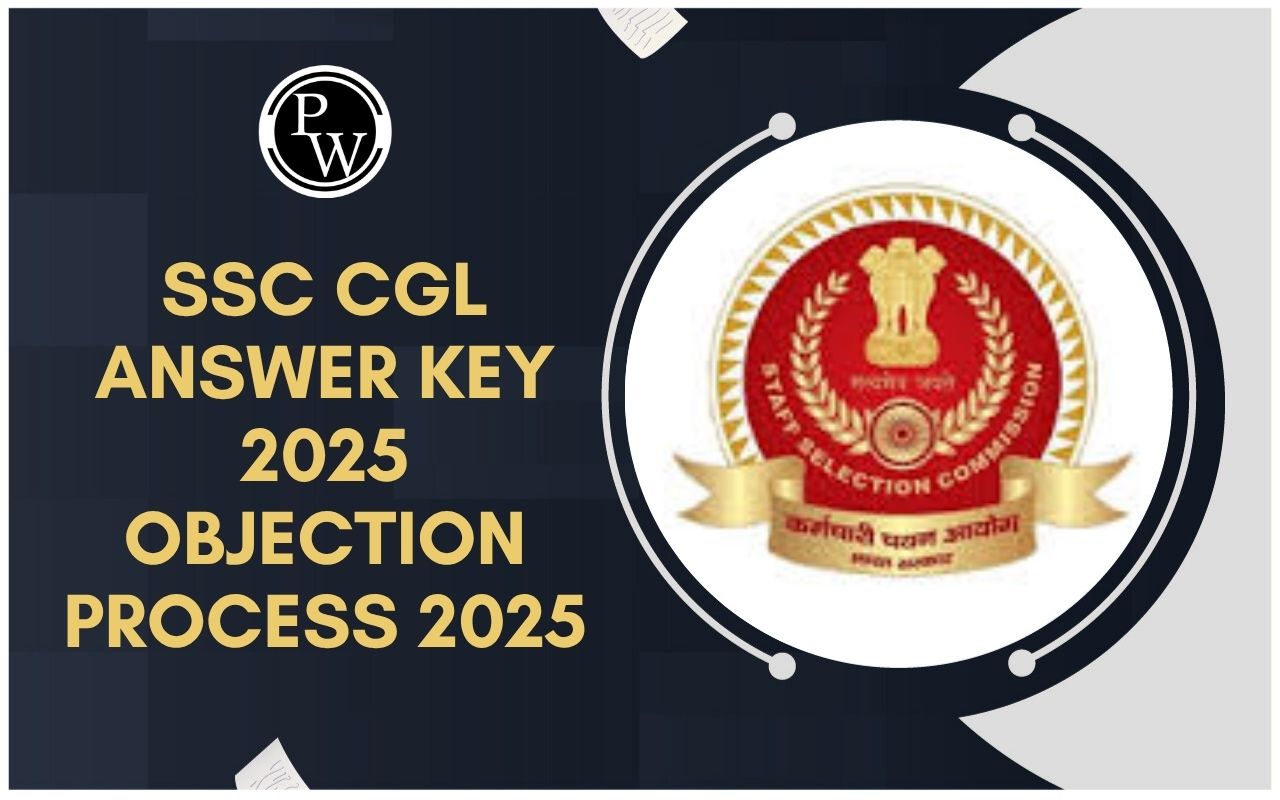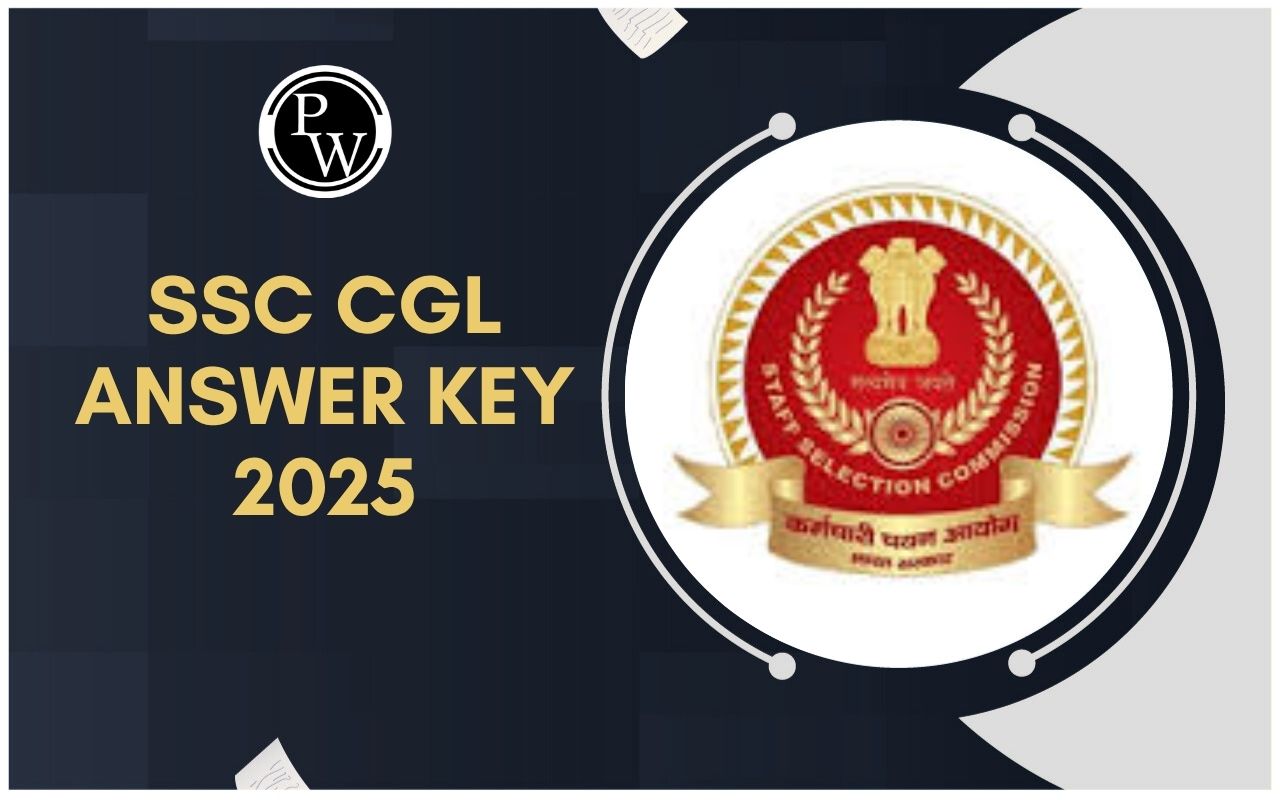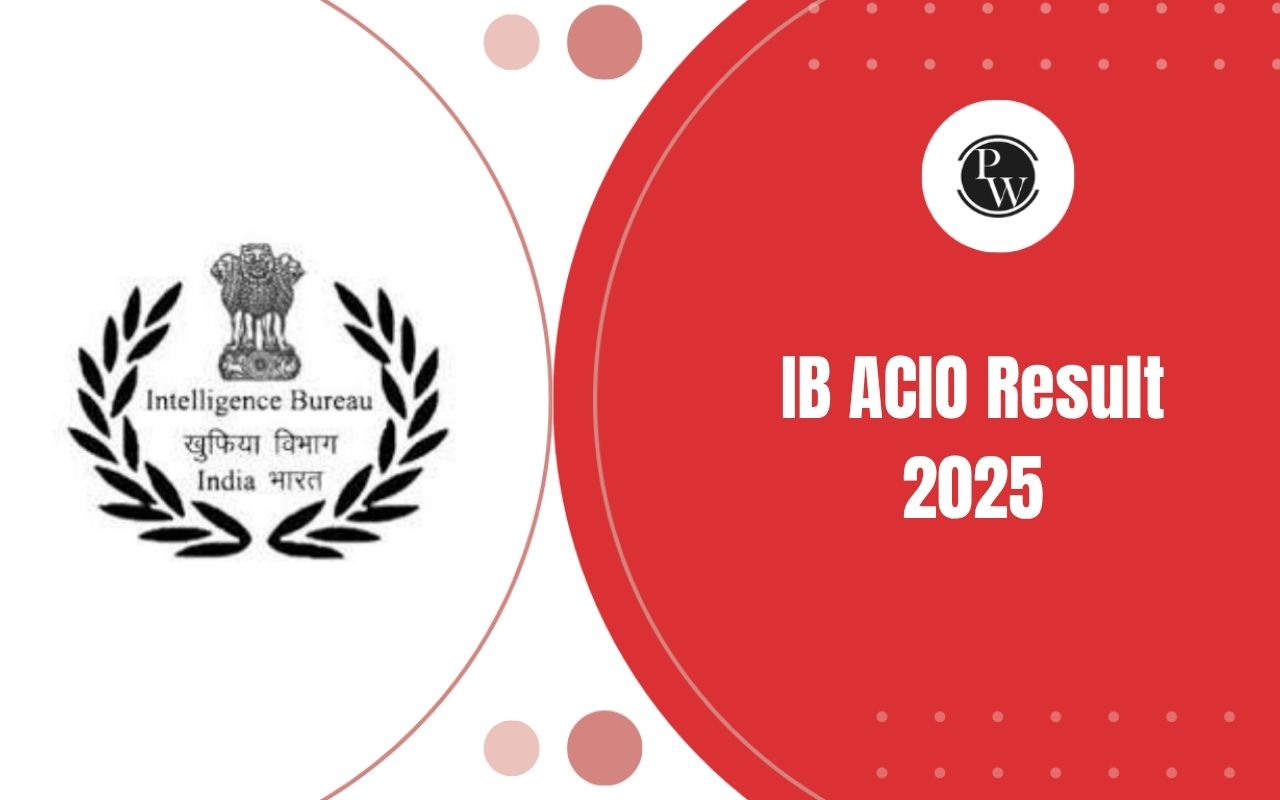
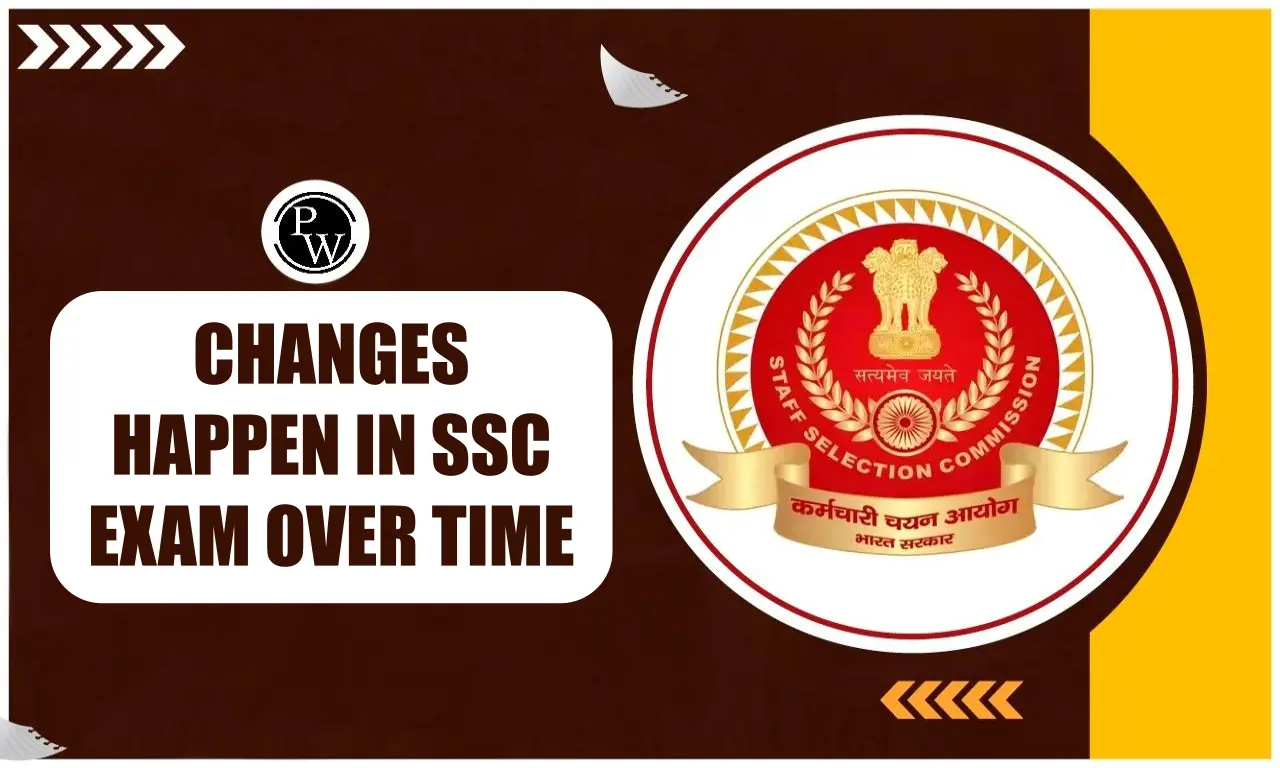
Changes Happen in SSC Exam Over Time: The Staff Selection Commission (SSC) plays an important role in recruiting candidates for various posts in government departments. Over the years, the SSC has undergone several changes to align with modern assessment methods, transparency, and efficiency. These modifications have had a direct impact on SSC aspirants' preparation strategies and the overall recruitment process. Here, we will explore changes happened in the SSC exam over time on various parameters such as the exam pattern, mode of examination, eligibility, selection criteria and more
Changes Happen in SSC Exam Over Time
SSC was established in 1975 to recruit personnel for various posts in ministries and departments. Initially, the exam pattern was simple and paper-based, with limited technical evaluation. However, with growing competition and technological advancements, the SSC recruitment process has become more comprehensive. Check major changes happen in SSC exam over time below.
Change in SSC Website
The Staff Selection Commission (SSC) has officially transitioned its website domain from ssc.nic.in to ssc.gov.in, marking a significant change in its digital identity.
Transition from Offline to Online Mode
One of the most significant changes in the SSC exam is the transition from offline pen paper mode to online computer-based tests (CBT). Most of the exams, including SSC CGL, CHSL, MTS, and CPO, have been conducted online.
This digital transformation demanded that aspirants adapt to typing speed, online interface familiarity, and time management in a CBT setup. Practicing on mock tests and understanding screen layouts has become essential.
Changes in SSC Exam Pattern
Earlier, SSC exams were conducted in multiple tiers, but later on, many changes were introduced in the SSC exams. This change helped SSC assess candidates' conceptual clarity, analytical skills, and job-specific aptitude more comprehensively.
In the past, higher weightage was given to Tier 3 exams (especially interviews). However, with the abolition of interviews for Group B and C posts, more emphasis is now on Tier 1 and Tier 2 exams. Check all the changes in the exam pattern for the main SSC exams below:
SSC CGL Exam Pattern Changes
SSC CGL (Combined Graduate Level) is one of the most popular exams conducted by SSC. Over the years, its pattern has undergone significant reforms.
|
SSC CGL Exam Pattern Changes |
||
|
Aspect |
Earlier Pattern |
Revised Pattern |
|
Number of Tiers |
4 |
2 (Tier-III removed, Tier-IV merged) |
|
Descriptive Paper |
Tier-III (Descriptive) |
Removed |
|
Mode of Exam |
Mixed (Offline + CBT) |
Entirely Computer-Based |
|
Skill Test |
Tier-IV (Separate) |
Integrated into Tier-II |
SSC CHSL Exam Pattern Changes
SSC CHSL (Combined Higher Secondary Level) is for candidates with 10+2 qualifications. The exam has also undergone changes to become more streamlined.
|
SSC CHSL Exam Pattern Changes |
||
|
Feature |
Before Change |
After Change |
|
Tier Structure |
3 (Objective, Descriptive, Skill) |
2 (Objective + Skill Integrated) |
|
Descriptive Test |
Yes |
Removed |
|
Mode of Test |
Mixed |
Fully CBT |
|
Skill Test |
Separate Tier |
Included in Tier-II |
SSC MTS Exam Pattern Changes
The SSC Multi-Tasking Staff (MTS) exam is conducted for Group C posts. It has seen important revisions in recent years to simplify the recruitment process and remove unnecessary stages.
|
SSC MTS Exam Pattern Changes |
|
|
Previous Format |
Revised Format |
|
Paper-I |
CBT with two sessions |
|
Paper-II (Descriptive) |
Eliminated |
|
Physical Test Only for Havaldar |
Still applicable only for Havaldar |
Why SSC Exam Pattern Changed?
The exam pattern reforms were necessary to solve several long-standing issues in the SSC recruitment system. Below is a detailed explanation of the factors that prompted these changes:
To Prevent Malpractices
In earlier years, SSC exams were conducted in offline mode. This increased the chances of paper leaks and other forms of misconduct. Switching to Computer-Based Tests (CBT) helped minimize such risks.
To Standardize Difficulty Level
Different exam shifts used to have varied difficulty levels, affecting fairness. The normalization of scores across shifts in CBT has addressed this concern effectively.
To Increase Evaluation Speed
Manual checking of descriptive papers used to delay results. CBTs enabled faster processing and reduced waiting time for results.
To Align Exams with Job Requirements
Each SSC post requires a different skill set. The pattern was revised to include skill and typing tests for roles like Data Entry Operator or Stenographer, making the process more role-specific.
Shift in Marking Scheme
The negative marking system has become more stringent over the years to minimize guessing. This ensures accuracy-focused preparation among candidates. To maintain fairness across shifts, normalization of scores was introduced. This compensates for any variation in question difficulty between exam sessions.
Changes in Eligibility Criteria
The age limit for some posts has been revised multiple times. Moreover, Age relaxations for reserved categories have been standardized. Degree equivalency and educational qualification clauses are now more clearly mentioned in the official notification. Some SSC posts now allow diploma holders or professional degree holders, expanding the candidate pool and making the exam more inclusive.
Removal of Interviews
In 2016, the interview process was abolished for all Group B and C posts. This was a decision aiming to eliminate subjectivity in selection, promote merit-based recruitment, and reduce corruption in final selections. Now, the final merit list is primarily based on written and skill tests.
Technological Advancements in Recruitment
Gone are the days when candidates waited for physical admit cards. SSC now issues e-admit cards, online scorecards, and final result PDFs through its official regional websites.
Use of Biometric Authentication
To tackle impersonation, biometric verification and Aadhaar-based authentication have been introduced in many exams, ensuring a secure and fair exam environment.
Aadhaar Enabled OTR
SSC has announced that One Time Registration (OTR) will now be linked with Aadhaar for all future examination cycles. Additionally, candidates will only be allowed to edit their existing OTR details for a limited period before the new Aadhaar-enabled system is implemented, after which editing will no longer be permitted.
Increase in Competition and Cut Off Trends
With a surge in the number of applicants every year, cut-off scores have increased significantly. This change reflects rising competition, improved coaching and resources, and a shift towards concept-based questions. SSC has also increased the number of vacancies in certain years to address staff shortages in central departments.
Revision in Posts
Over time, SSC has revised its post offerings. A notable addition is the Sepoy post in the Narcotics Control Bureau under the SSC GD exam. Conversely, the Assistant Audit Officer (AAO) post, once a top-tier role in the SSC CGL exam, has been officially removed from the recruitment process.
Regional Language Inclusion
In 2023, the SSC GD Constable exam was conducted in 13 regional languages in addition to Hindi and English. This step significantly widened the exam's reach, allowing candidates from diverse backgrounds to participate more comfortably. By embracing regional languages, SSC not only promoted inclusivity but also ensured a fair opportunity for non-Hindi speaking candidates across the country, making the central recruitment process more accessible and representative of India’s diversity.
Introduction of SSC Annual Calendar
The introduction of the SSC Annual Calendar has brought greater transparency and structure to the recruitment process. It provides candidates with a year-long schedule of upcoming exams, allowing them to plan their preparation effectively. This systematic approach also helps reduce uncertainty and ensures timely notifications and updates for various SSC examinations.
Exam Centres and Accessibility
SSC has expanded its network of examination centers to include more rural and semi-urban areas. This development has significantly reduced the travel burden for candidates, especially from Tier 2 and Tier 3 cities. As a result, more aspirants from remote regions are now participating in the exams, enhancing nationwide accessibility.
PW provides SSC exam content, including SSC Exam Blogs, sample papers, mock tests, guidance sessions, and more. Also, enroll today on SSC Online Coaching for preparation.
Changes Happen in SSC Exam Over Time FAQs
What is the most recent change in SSC registration?
Has SSC added or removed any posts recently?
In how many languages is the SSC GD exam now conducted?
What change has been made to the SSC official website?

